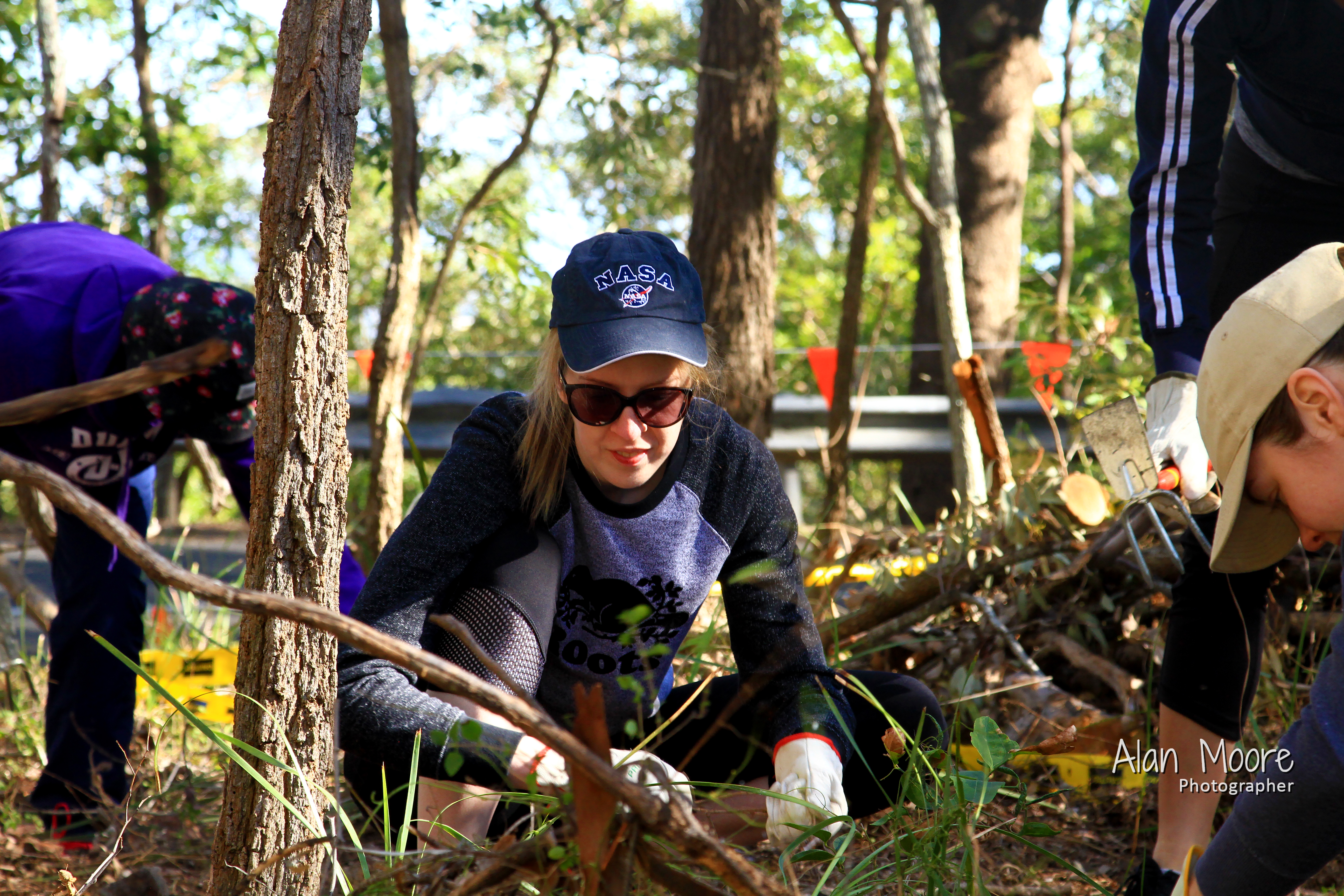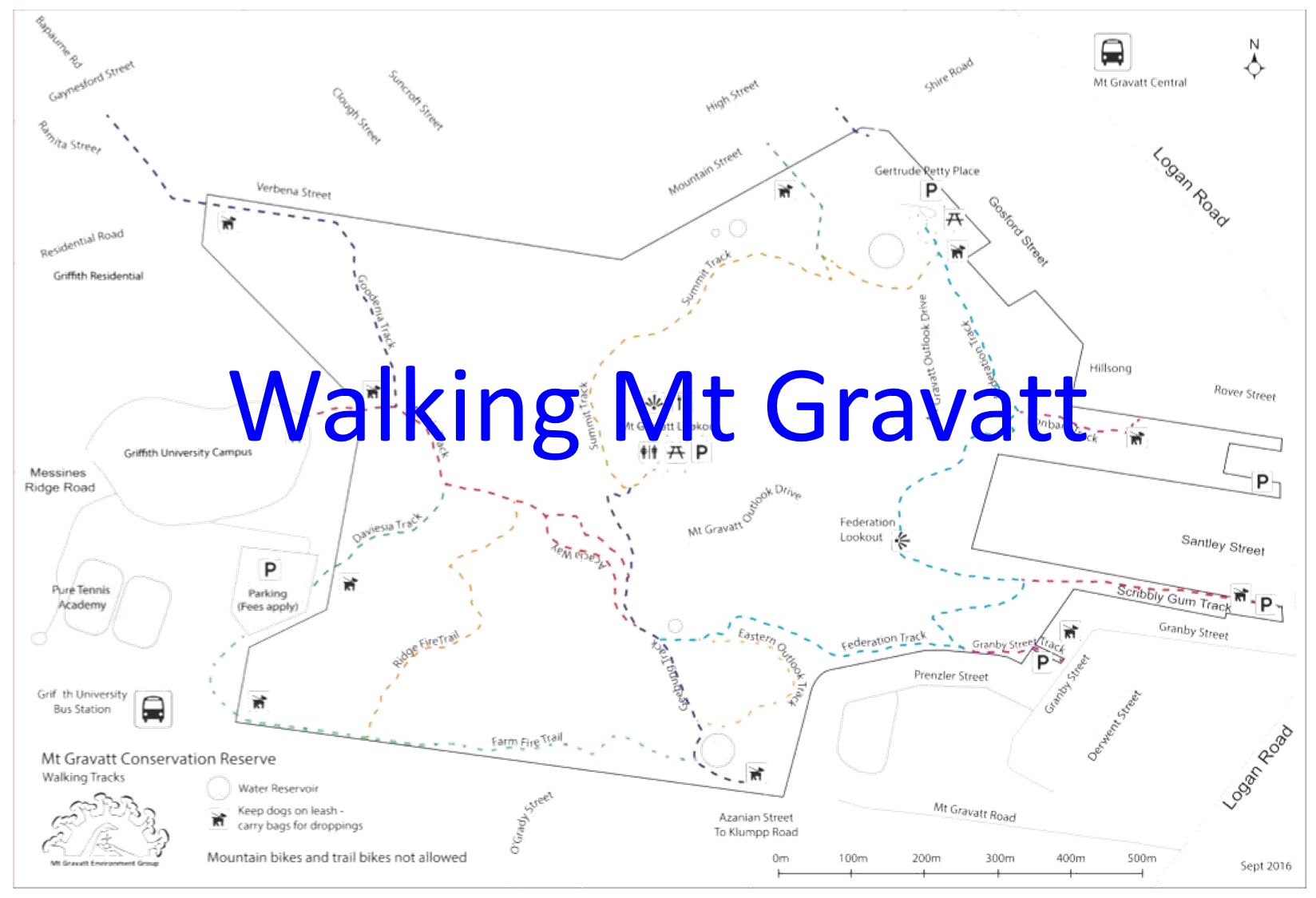By: Michael Fox
Photos: Kate Flink
OWeek Semester 2 2016
It is always a pleasure to lead a guided walk with our Griffith Mates partners, sharing some of the surprising relationships between different plants and between plants and the animals that depend on them for food and shelter.
Many of the students who join the walk are international so it is a great opportunity to introduce these visitors to our unique bushland. Unfortunately no Koalas spotted this time.

Walking Acacia Way we discussed the importance of tree hollows for nesting and the curious Allocasuarina: male trees have russet (red-brown) flowers on tips of leaves and female trees have red ball flowers growing directly from the branches.

.
.
.
.
.
Stopping at the interpretative sign I used the QR code to bring up the online video of a Striated Pardalotte Pardalotus striatus with its “chip-chip” call on my iPhone. As soon as the birds high in the trees head the call they started to respond with their own calls.
.
.
.
Settlers Flax Gymnostachys anceps has an interesting history of use by indigenous people and white settlers:
“Fibres were used to make fishing line. There are records of use as string by Europeans (to bind and carry pigs by the feet).” Save Our Waterways Now (SOWN)
.
.
After visiting Fox Gully Bushcare site we spent time clearing Creeping Lantana Lantana montevidenses.



























